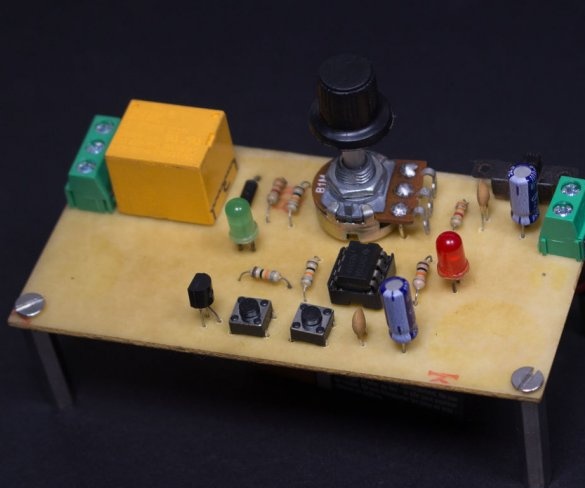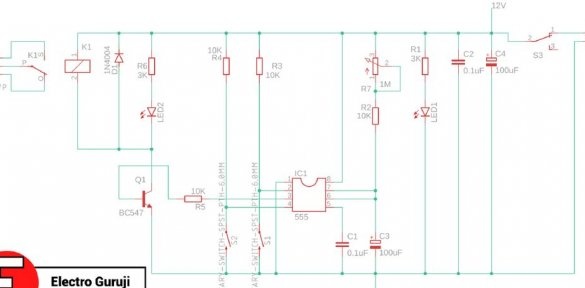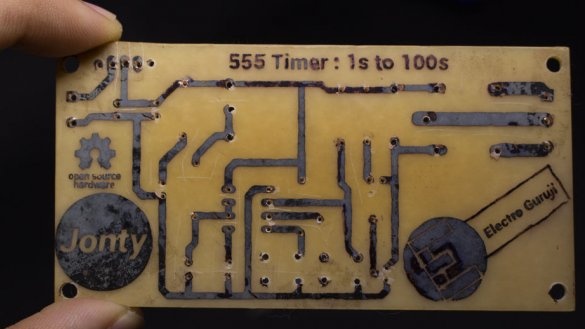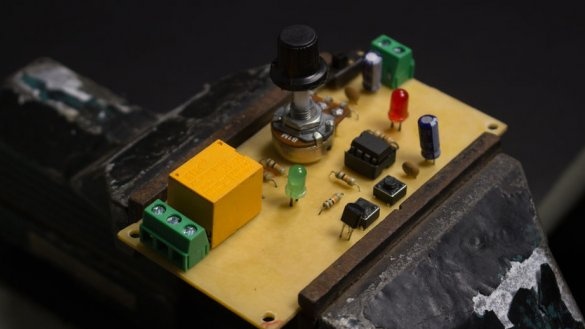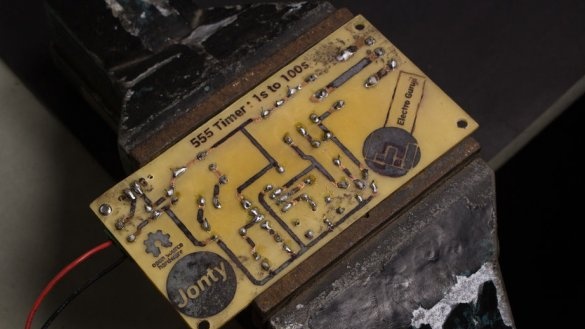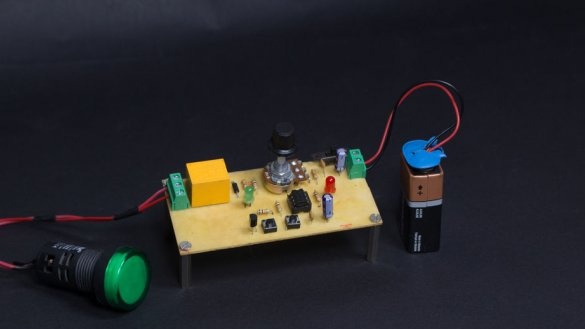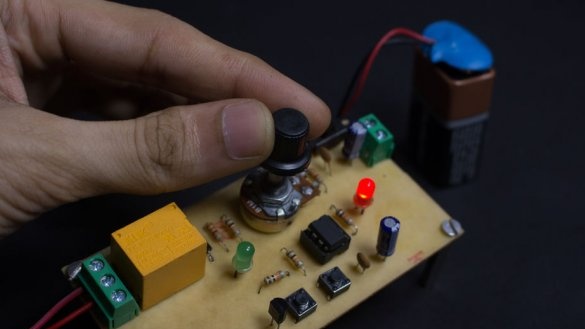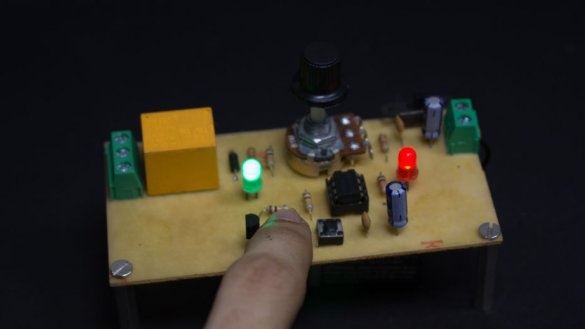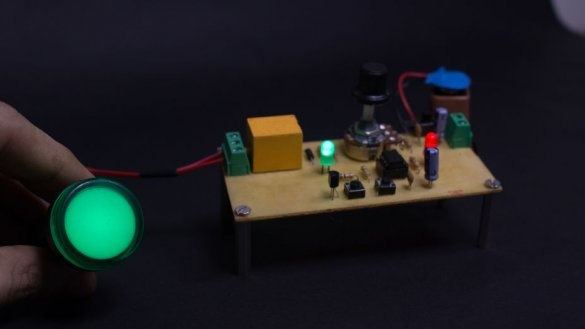Since the author of Instructables under the nickname ElectroGuruji liked the fact that I translated his article, I decided to translate another one. Old-timers will remember how the time relay for photo printing was once popular. Any self-respecting periodical for masters has published at least three schemes of such homemade in year. Today, film photography is being revived, which means that the sky comes again in these assistant devices, which allow to obtain better photo prints with less labor.
The time relay is made on a 555 timer chip (KR1006VI1), a feature of which is the immutability of the shutter speed when the supply voltage changes within acceptable limits. But since the relay switching the enlarger is taken with a 12-volt winding, the supply voltage of the device should be chosen close to this value. Too little - the relay will operate uncertainly, too much - will overheat or even burn out. Automotive relays are unsuitable - they do not provide sufficient insulation.
Chip 555 can operate in the modes of the Schmitt trigger, multivibrator and single vibrator. The mode is determined by the switching circuit, in the proposed time relay, the microcircuit is included as a single vibrator. At the moment of starting the single-shot, the time-order capacitor is discharged to a voltage below 1/3 of the supply voltage, and the shutter speed begins. The capacitor is slowly charging at a speed determined by the resistance of the timing resistor. As soon as the voltage across the capacitor reaches 2/3 of the supply voltage, the shutter speed stops. The device diagram is shown below:
While the shutter speed lasts, a logical unit is present at the output of the timer. If the load is turned on between the plus and the output, it turns off, and at the end of the exposure it turns on again. If between the output and the common wire - on the contrary, which is required in the time relay for photo printing. The current consumed by the load can reach 200 mA. Although this is enough to control the relay directly, the master decided to add an intermediate key on the transistor. It also includes a resistor to limit the base current and a protective diode connected in parallel with the relay coil in the opposite direction.
The button connecting the common wire to pin 2 of the microcircuit serves to start the shutter speed, and connecting the common wire to pin 4 - for its early termination. When the buttons are depressed, the resistors pull the corresponding pins up.
The author makes a printed circuit board LUT. Files: source code (diagram, board) under GPL v3, direct link on pdf for print. This is how the board looks in theory and in practice:
Video about the manufacture of the board:
When assembling, the master again, as in the previous article, uses a vise as a "third hand". Of course, doing so is recommended only if you can accurately calculate the clamping force. Assembled board on both sides:
When checking, the master uses a standard LED indicator lamp similar to the AD22DS as a load. The numbers 22 indicate the diameter of the bore hole - 22.5 mm There are also AD16DS lamps for holes of the corresponding diameter.
The wizard sets the shutter speed:
Starts the time relay:
The lamp is on:
Video about using the time relay, the action of the start and early reset buttons is shown:
The master does not show the addition of a fuse or circuit breaker to protect the power supply and the enlarger lamp, the manufacture of the housing and scale for the variable resistor, as well as its calibration. But for all this you need to spend time necessarily. And on the table of the photographer-filmmaker will be comfortable electronic assistant device.

